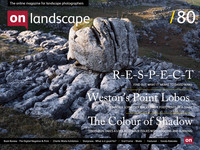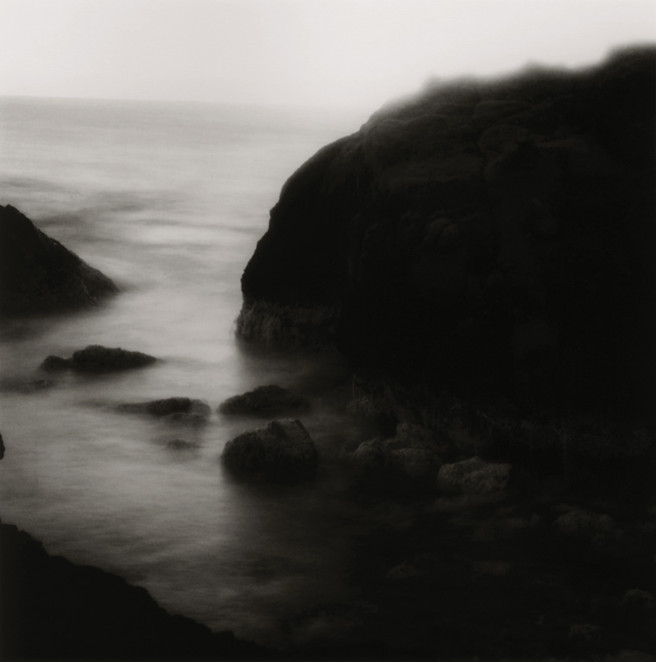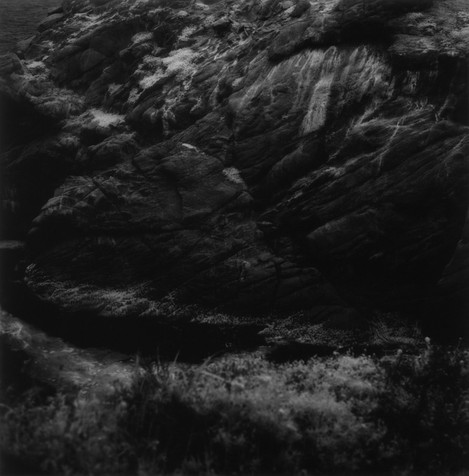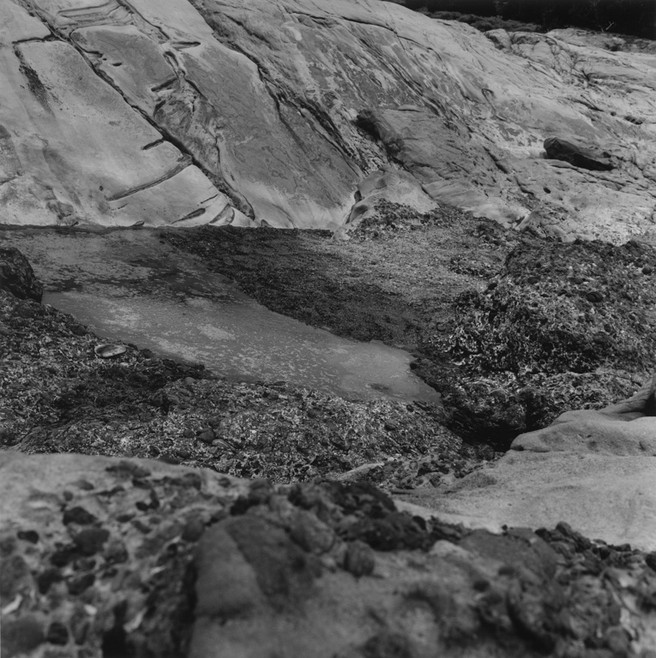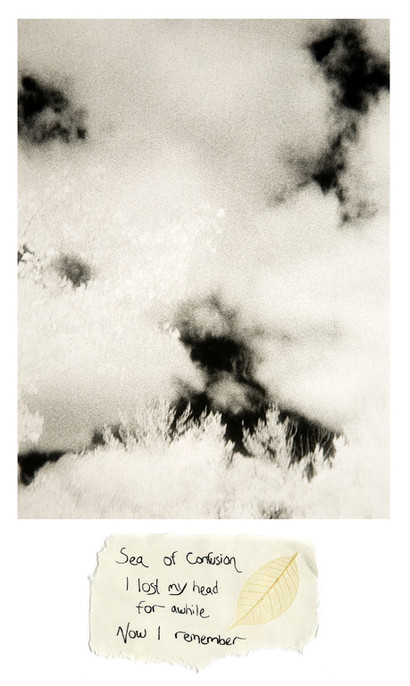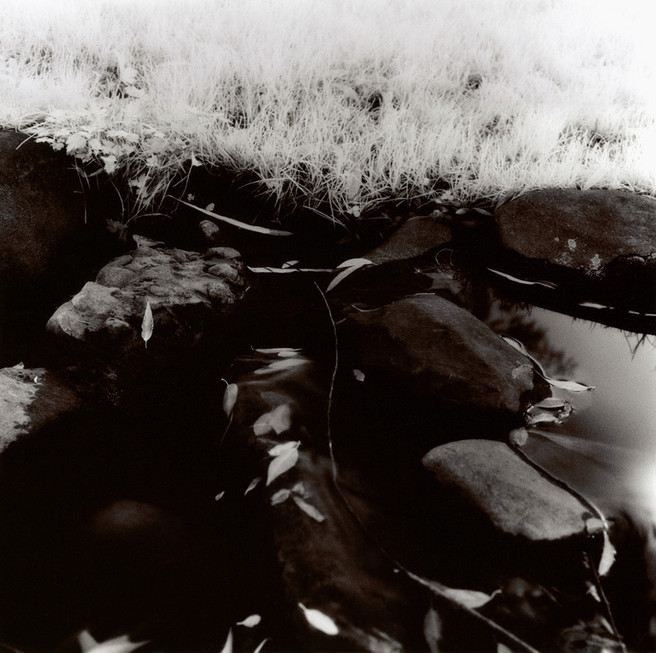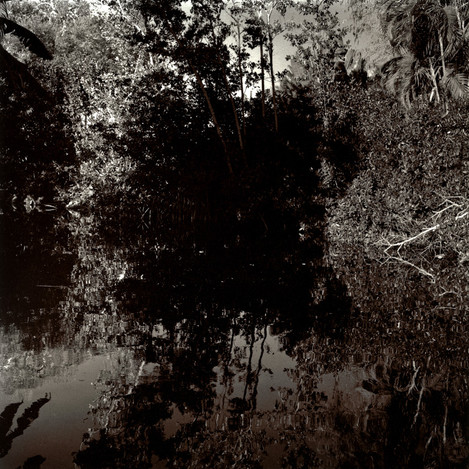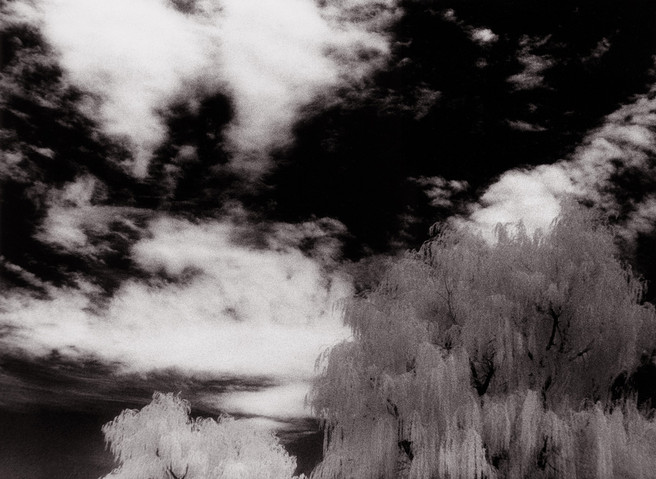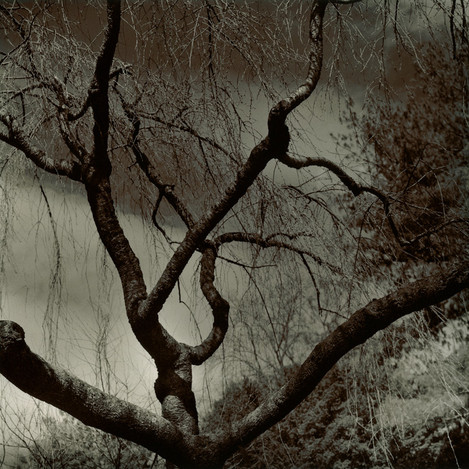Kimberly Schneider walks in the Footprints of Giants

Kimberly Schneider
Kimberly Schneider was born in Chicago, in 1977. As a teen, she was always taking photos, but it wasn't until she started working for a photographer in 1999, that she decided to make photography a career choice. She graduated from Colorado State University in 2002, with a BFA in photography (and minor in philosophy), and has been based in New York City for the past 15 years.
Kimberly lives and breathes photography, and is truly dedicated to the art of the handmade print; She not only prints all of her own work by hand, but also teaches (both privately and at Penumbra Foundation), as well as prints for others.
Schneider began making photograms due to having an unfinished darkroom at the time of the shutdown; In less than a year, she had nearly completed a trilogy of new (cameraless) work and began teaching some of her new processes (online). Her second online course is currently open for registration.
Her handmade prints have been exhibited at The Camera Obscura Gallery, San Diego Art Institute, Scott Nichols Gallery, Art Intersection, ZIA Gallery, Photo Méthode Gallery, Stonehenge Gallery, Troy University, Lightbox Photographic Gallery, among other galleries, and she continues to show her work regularly.
Kimberly’s new work recently placed 3rd in the 16th Julia Margaret Cameron Awards, as well as Honorable Mention in the 16th Pollux Awards; She looks forward to exhibiting 9 of the award-winning photograms in the upcoming 6thBiennial of Fine Art and Documentary Photography, which opens, at FotoNostrum Gallery - in Barcelona, Spain, on December 9th

Tim Parkin
Amateur Photographer who plays with big cameras and film when in between digital photographs.
Hi Kimberly, can you tell us a little bit about your background, how you got into photography and why landscape in particular?
It seems like I was always taking photos, but it wasn't until 1999, when I transferred to Colorado State University, as a philosophy major, that I happened to fall into photography. Basically, I happened to be in the art building, leaving my required survey art class, when I noticed a sign for a job working as a photo assistant. I applied on a whim and got the job.
After a month of being around the photographers, I knew that I didn't want to just be on the sidelines anymore; I wanted to learn how to do it professionally. However, the only way to get into a photo class at CSU was to become an art major, which wasn't a huge stretch from philosophy, but was more than a little daunting to me, as I had no art background and was not great at drawing.
At the time, I really didn't see myself as an artist, so I asked my art (survey) Professor for advice. She was really supportive, and suggested that I do a photo project with my automatic camera for the final. So I did. I went shooting in the mountains for the first time, and it was exactly the push I needed to make my decision. That was probably the first time I shot b&w film, and I was amazed by the results. I had my answer. Looking back, I see things in those early images that are still visible in my current work.
By the time I got into my first in depth photo class (it was always full), I had completely fallen in love with art and was thrilled to finally find something that I actually wanted to spend my life doing. By then, I knew that my work was naturally expressive and tended to leans towards the more abstract, yet I was drawn to more realistic depictions.
However, I was not great at anything overly linear. Things like drawing in a realistic manner were a struggle for me and I did not enjoy the procedure. With photography, I found that I could be both realistic and abstract at the same time, and once I had the techniques down, I loved every step of the process. It was then that I realised that what I had always been looking for had been right in front of me all along, and it was photography.
I actually started out as a street photographer, although that first roll of b&w film was my first real insight into who I was as a photographer; I just didn't see it at the time. Basically, I was doing street photography until my professor suggested I try something new. So I asked my roommate to take me to the mountains. This was my first real trip to the mountains (the first one was nothing like this), and he kind of just left me in this area full of huge jagged rocks while he went fly-fishing. Climbing the rocks with my equipment was pretty scary back then. I enjoyed the images I made there, and I wanted to make more images in the land, but I didn't see myself as a landscape photographer.
It wasn't until I discovered the work of Minor White that I truly found myself as a photographer. I was taking upper division eastern religion classes at the time (I have a minor in philosophy), and they were starting to make a big impact on my work, so I really related to his images.
My photographs have always been naturally expressive, but at that point, I wasn't sure how to handle it, they seemed too expressive to me, I couldn't hide anything. When I saw and learned about Minor White's “Equivalent” images, my work finally made sense to me, and I started to embrace “equivalents” of my own.
It was then, that I was inspired to make my first infrared landscapes. I loved the thick, fluffy clouds in Colorado, so I decided to do an infrared cloud study to get a feel for things. I found that infrared translated what my images were trying to say even more effectively than traditional b&w film. Soon after, I did an independent study, shooting infrared film at night, concentrating on what I call tree “entanglements.” By then, I was drawn (almost) exclusively to sky/land/seascapes - and obsessed with infrared film.
To give you the current answer, I am drawn to desolate land and seascapes. For me, making images is a meditation of sorts, a search for truth. While I am intrigued by the formal qualities of the areas I photograph, there’s something about shooting in the land and by the sea that releases my innermost thoughts and somehow transfers them to my photographs.
Your current Point Lobos work is touching the same ground that Edward Weston touched many years ago (literally!) was he an influence from the beginning and how did your knowledge of him develop and reflect in your work after staying at his home in Carmel and working on the beach?
Yes, I was inspired by Weston's work from the moment I first laid eyes on it, but it made a much larger impact on me once I became focused on landscapes myself. Since my early days of photography, I dreamed of making images in Point Lobos, where the Master(s) who inspired me did. When it happened, it came about by accident, a very happy one.
I was visiting Sacramento to attend the opening reception(s) for a show I was in. After the openings, I did a little traveling and then went to San Francisco. I was hanging out at Scott Nichols Gallery (Scott is a friend), and trying to figure out where to go shooting, when he asked if I'd liked to stay at the Weston’s cabin. I nearly passed out. I believe my exact words were "Wait, I can do that??!!!" YES!!!!! So Scott set it up.
I stayed at Bodie House for 2 1/2 days, and immersed myself in everything Weston. I even got to go into Edward/Kim's darkroom. My first evening there, I got trail suggestions from Gina Weston (Kim's wife; Kim is Edward's grandson) and watched videos about Edward until I fell asleep, surrounded by his images and memorabilia.
As I was shooting in Point Lobos, particularly at Weston Beach and China Cove, I could almost feel the spirit of Edward Weston guiding me, until I suddenly realised that I had found the place I truly connected with. Being there felt like I was literally watching my dreams being brought to life.
My images are not about Edward or his work at all. However, the experience of walking in his footsteps and staying at his home, made a huge impact on me, as well as this body of work. No words can come close to conveying the experience. I will say that I suddenly felt like my technical skills were sharper than ever before, and I do think his influence played a part in that.
Any way that Weston’s work is reflected in mine was purely subconscious, but I was definitely more inspired by his work at that time than ever before, and still am. One particular image of his, "Surf, Point Lobos, 1938." has been haunting me since early into printing this body of work. I saw that image at AIPAD a couple years ago and couldn’t get it out of my head, so I purchased "The Last Years in Carmel." I spent a lot of time with that book throughout the early part of my printing process.
Weston's images eventually helped me understand where the next phase of this body of work needs to go, purely as an inspirational tool. They also made me realise that a view camera is not just something I've been wanting for a long time, but it's something that my ongoing work really needs. When I look at my images and I look at his, I see that the one thing my work calls for is the amount of detail that only a large format negative can provide. I'm currently working on funding to purchase a view camera...
I returned to Point Lobos in late 2012, but due to traffic and availability of rental cars over the holidays, only had 5 hours to make photographs before the park would close for the night.
I was pulled to crashing waves and still waters, and somehow managed to shoot enough to get me to where I am now. I hope to return there this fall - to start the next phase of this body of work, although I do wish to visit some other locations as well.
While I feel that my work will always be closely aligned with Edward Weston's, it will always be my own. I have no interest in emulating anyone's work.
You have also worked on cloud studies and anybody who does so can't help but walk in the footprints of Stieglitz - are these works equivalents and if so what were you trying to distil?
It's funny; I actually made those images before I learned of Stieglitz's "Equivalents." When I saw those images for the first time, I was pretty blown away that we had the same idea. I also felt a kinship to Stieglitz's work, which began in my early days of photography. I simply wasn’t aware of this particular series at the time. To this day, those are my favourite images of his.
I like to think of my photographs as "natural equivalents." All of my images are essentially self-portraits, as whatever is going on in my life (or my subconscious) will end up revealing itself in my images. I have no choice in the matter, it just happens. I saw that the most clearly upon exhibition of this body of work; it was the first body of work that I shot completely on infrared film. I also displayed some of the cloud images with haiku I wrote, which was something I had never done before.
Honestly, I usually don't know what my work is truly about until I've been printing for a while. Suddenly after days, weeks, sometimes months of printing, I’ll see something in my images, and before long, poetry will just flow out of me. That’s when I genuinely start to understand what the body of work is about. I continue to learn about my images, as well as myself, throughout the remainder of my printing process.
You started out taking street photographs, what attracted you to landscape work. How do you feel after you've worked on a couple of landscape projects?
Well, I was going to school in Colorado where I was surrounded by beauty every day. At that point, I didn’t even know that I would like to hike, much less with photo equipment (which was still 35 mm back then), and wasn’t at all used to the small town feel of Fort Collins.
Yet, I was always the most inspired by landscape photographers; Edward Weston and Michael Kenna were the first two who really made an impact on me.
My attraction to the land was somewhat of a gradual process. Keep in mind that in just over a year (including summers), I went from not knowing if I could draw, much less fathom I’d see myself as an artist, to falling completely, head over heels in love with art.
It began when I moved into a shared house off campus; it not only had a back yard with views of the foothills, but it was actually a completely open area. There were beautiful paths behind the house, and a creek - just feet from our back door. I started to take long walks out there to relax, and eventually started exploring the area more. There was a willow tree across the water that I became obsessed with (the very same tree in “Willow Dreams”), and before long I was starting to bring my camera with me on those walks.
I moved a little further away the next year. After the back “yard” I just left, I was inspired to walk (instead of drive) to class from my apartment - to explore the area. It was a good 45-minute walk if I’m remembering correctly. After I learned my way around, I started taking the longest, most beautiful routes. I would find myself staring at the thick, fluffy clouds, and becoming mesmerised by the dry, almost decayed trees.
One day I was walking to class, when I was suddenly inspired to stop to write and poetry. That was the moment I saw myself as a landscape photographer. After that, I started walking with my camera every day. That’s actually how the infrared cloud study began
To address the second part of your question, that really depends on the projects and the gap between the two of them. I’m usually either more inspired than ever before to create the next body of work or totally drained, empty. The only way to really describe it is that it’s like having all the effects of acupuncture, but without the needles.
As far as how I feel about the actual bodies of work, let me start by saying that every body of work I make is a natural progression from the last - even the ones that might not seem like it at first glance. How I feel about the conclusion(s) of the projects is a whole different thing.
For example, my last body of work began during a very dark time in my life, but it evolved throughout the process. I actually thought I was finished with it until about a week ago, when I decided to test out an older image in a larger size. I didn’t end up using the image, but looking at that work print made me see all of my photographs from that time period in a very different way.
Basically, my life has changed so much since I began that body of work in 2007, and I feel like it’s ready to take on a new life of its own. I’m also starting to see how much it’s related to my current/ongoing body of work, so for the first time in my life, I’ll be working on 2 bodies of work at the same time. It should be interesting.
Your Lobos images have intentionally listing horizons - can you tell us more about that
Yes, I’m glad you realised that they are intentional. A lot of people think that they were accidental. The thing to keep in mind is that my images aren’t traditional landscapes; they are self-portraits. My work is who I am, and I don’t leave that out of my images.
The way I see it, my life isn’t perfectly straight, so why should my horizons be?
I actually did take some images with perfectly straight horizon lines, but they didn’t feel right to me, they didn’t feel like me. That said, the body of work could change, and I might be inspired to do perfectly straight horizon lines down the road. I don’t really see that happening any time soon, but you never know.
You work with film, can you tell us more about your reasons for this and some of the challenges involved.
Film is paramount to my process. Making photographs is a spiritual experience for me, and I appreciate the way that translates to my photographs. I find that it gets a little lost in translation when I shoot digitally.
My work is about asking questions and seeking answers - and I don't gain the same insights while editing on a computer. In case it wasn’t obvious, I’m also a huge darkroom geek - and that’s putting it mildly. Let me put it this way. I went about 4 years before I had my own darkroom space (a shared rental). When I did find it, I walked in, smelled the chemicals, and was home again.
Image quality is also a big factor. I have very high standards for prints. It actually drives me crazy when I go to a show and see a gelatin silver print that wasn’t quite burned in enough or is a little flat. I would never be comfortable printing my images digitally.
As far as challenges, I’ll talk about the biggest ones for me right now.
Let’s start with film itself. As you now know, I’m primarily an infrared photographer. At the moment, there is no true infrared film on the market. There was until a year or two ago, when Efke had problems with their machinery and had to stop coating all film and paper. However, I am getting ready to test the Rollei “like infrared,” I just really prefer the real thing.
Paper is really the biggest challenge for me right now. I’m finding that I keep running out of certain images (I submit to a lot of different things). My paper is really expensive, and I’m meticulous when it comes to printing, so it seems like I’m always almost out of paper – or rushing to reprint images when I do have it. The dream is to have a paper sponsor, and enough consistent time to work on new photographs, rather than stopping and starting all the time.
Another challenge with paper is that the only reliable source for my paper (in the US) is Freestyle Photographics, which is based in California. I print on Fomatone MG, which B&H technically carries (is local for me), but my size is never in stock, and it takes 3-6 weeks to get it in. Let’s just say that I never have that kind of time to wait for supplies.
I’ll leave you with printing/enlarging supplies. A lot of photo equipment and accessories are not only harder to find, but not made as well as they used to be. Even things like graduates and stirrers are made cheaply now and don’t last as long. There are also a lot fewer options to choose from.
Your photography work isn't a full time occupation at the moment - how do you find enough time to keep going and do you hope to pursue photography full time in the future?
Well, photography is a full-time commitment, so I’ll do whatever I have to do to make the time. It does get pretty insane though. I have a lot of other photo (and non-photo) things I’m working on all the time, so it’s rare for me to even start setting up in the darkroom before 8pm. I usually have to pull all-nighters to have enough time to make new work on short notice, but I’m trying very hard to avoid that.
To clarify, printing by hand takes time and I do several processes, so there aren’t always enough hours in the day to deal with life and all of my photo deadlines, much less mixing chemicals and printing. I don’t count 12 hours in the darkroom as an all-nighter. I’m talking at least 24 hours just for photo.
To be honest, I’m not sure that there will ever be “enough time,” until I get to the point where I can hire someone to take care of the non-photo and maybe some non-creative things, but I do schedule everything in advance, and a lot of what I’m doing right now is everything humanly possible to make my photography a full-time occupation.
So yes, to answer the next part of your question.
The plan/dream is to eventually live off the sale of my prints, with the help of grants. It’s actually starting to seem realistic, but will take time.
In the mean time, I’m trying to find more (gelatin silver) printing clients, freelance work, and would love to do some workshops.
You primarily shoot infrared film, how do you determine which images you shoot on traditional b&w film?
I’ve been making infrared images for so long, that it’s really “by feel.” I kind of (naturally) visualise things in b&w, and that’s especially true for infrared, so I trust my instincts. Of course I’m still technical, and I do like my infrared to really pop, unless there’s a reason to be subtle.
You print by hand, so do how to do you digitise the work for putting it online?
I tone my prints for colour shift and I don’t have a large scanner, so I bring my final prints to a lab I trust. It does get expensive, so I usually only have a few scanned at a time.
Do you feel that the jpeg versions accurately represent your work?
Absolutely not! Anyone who’s ever seen my work in person is always shocked at the difference. The scans don’t read the darker areas well, so areas that are full of subtle detail end up showing up pure black on certain computers. It’s really frustrating, especially since most submissions are online these days
In fact, since so much detail is lost in the darker areas of my images, I find quite often that some of the subtle details that are not lost tend to look distracting, more like dust than part of a rock or twig for example, so I essentially have to double spot images that barely have any dust.
If you want to find out more about Kimberly's work, you can visit any of the links below. You can contact her directly via her website, or message her on Facebook or Twitter.
Website: http://www.kimberlyjschneider.com
Facebook:
Twitter: https://twitter.com/KJSPhotography
Fotofilmic: http://fotofilmic.com/?portfolio=kimberly-schneider-new-york-ny-united-states
Saatchi Art: http://www.saatchiart.com/KJSPhotography
LensCulture: https://www.lensculture.com/kimberly-schneider

